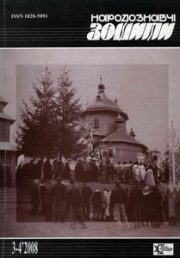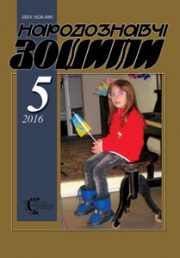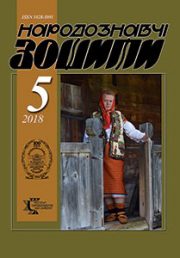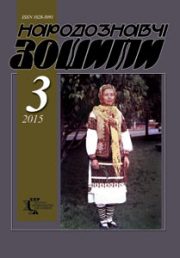The Ethnology Notebooks. 2017, 1 (133), 154—159
UDK 392.51(477.86)
DOI https://doi.org/10.15407/nz2017.01.154
Received 3.02.2017
THE WEDDING RITUALITY OF HORODENKA DISTRICT (ON THE BASE OF 2016’S EXPEDITION DATA’S)
Boichuk Chrystyna, postgraduate student of The Carpathians of Vasyl Stefanyk Precarpathian National University
Shevchenka Street, 57, Ivano-Frankivs’k, Ukraine.
Contacts: +380342 59-61-87;
Abstract. Wedding ceremony is the basis of the birth of a new family and its progeny. It has its own local differences in the performing of ceremonies depending on region of Ukraine. In particular, the special features of the wedding ceremony of Pokuttia of Horodenka are examined in the article.
Keywords: wedding, ceremony, korovay, propoi, popravyny.
REFERENCES
Kyrchіv, R. (2015). Istorіohrafіia etnohrafіchnoho doslіdzhennia Pokuttia. Narodoznavchі zoshyty, 1, 70—90 [in Ukrainian].
Pan’kiv, M. (Ed.). (2000). Vesillia u seli Verbivtsiakh na Horodenkivschyni. Ivano-Frankivs’k: Lileia-NV [in Ukrainian].
Marchuk, V., & Korol’ko, A. (Eds.). (2010). Pokuttia: іstoryko-etnohrafіchnyi narys. L’vіv: Manuskrypt [in Ukrainian].
Ponomar’ov, A. Ukrains’ka etnohrafiia. Kurs lektsij. Kyiv: Lybid’ [in Ukrainian].







